Idemitsu Art Award 2021 Grand Prix Winner Interview
I want to create paintings that allow the viewer to relive my own perspective.
Idemitsu Art Award 2021 Grand Prix Yuta Fukuhara
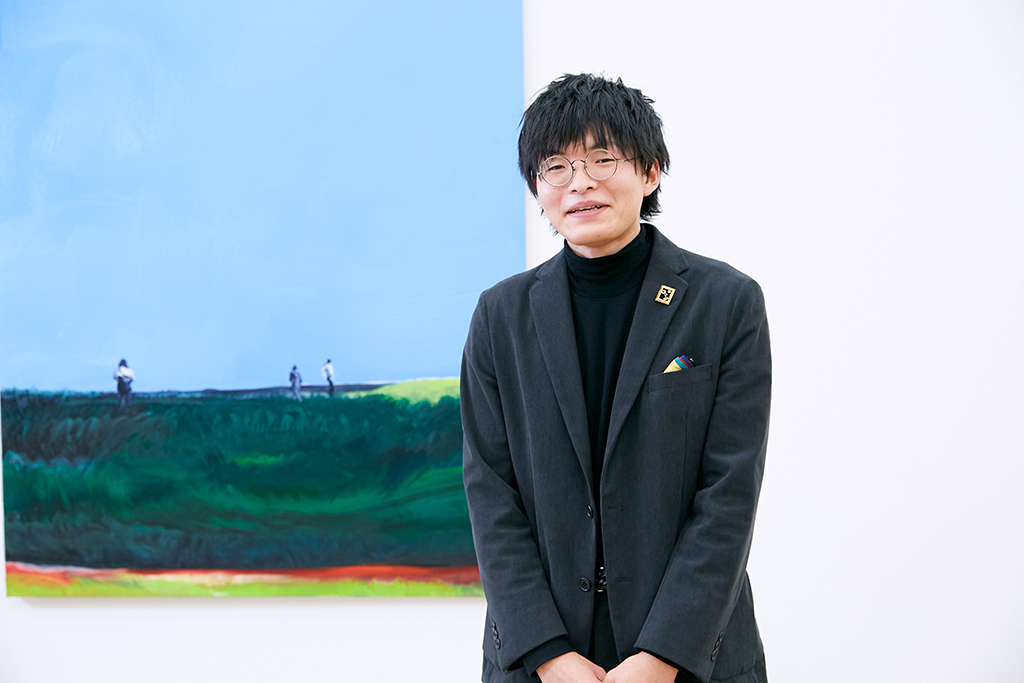
The Idemitsu Art Award is a public exhibition sponsored by Idemitsu Kosan for two-dimensional works by young artists under the age of 40. It was founded in 1956 with the desire to “contribute to the development of domestic culture and art”, and 2021 will be its 66th year (50th time). In 2021, Yuta Fukuhara's “Untitled” won the grand prize out of 732 entries submitted by 508 people. He is a painter born in 1997 who graduated from Musashino Art University, Faculty of Art and Design, Department of Oil Painting, in 2020. We spoke to Mr. Fukuhara about his motivation for applying and his production activities.
I leave the location and time to the viewer and cherish the freshness of my paintings.
─ Congratulations on winning the grand prize. Please tell us about the award-winning work “Untitled”.
I went for a drive with 6-7 friends in the middle of the night and drew this based on a photo I took from a hill with a nice view of Hachioji, Tokyo. The reason why the sky is not dark is because first of all, I wanted to paint a large sky in my favorite color, and I wanted to create a space with a clear sky. From there, I drew a grassy field and drew a red line to create a sense of distance, giving it depth.
─ Do you always take photos and draw?
Everywhere I go, I take photos with my smartphone and look at the scenery while thinking about how to turn it into a painting. When I take a photo, I always have an image in mind of what I want to draw and how I want to draw it.
This time, I did not depict the city lights that appeared in the photo, leaving the location and time up to the viewer. I wanted the viewer to relive the sense of freedom of meeting a friend for the first time in a long while while driving when the coronavirus pandemic had calmed down, and the feeling of wanting to travel somewhere different, at least in the painting.
Although I personally associate this painting with fond memories, some of the judges interpreted it as “disturbing, but hopeful”. When I became a viewer myself, I thought, “It certainly looks like that.” I believe that if there are 100 people, there will be 100 different ways of feeling the viewer. As for the title, I intentionally chose “untitled” because adding a title would limit associations.
─ I can feel the swell of the wind in my strokes (handwriting). The painting seems to have a lot of momentum, but how long did it take you to draw it?
Some works are quick to create, taking about 30 minutes to an hour, while others take several days, but I was able to draw this one in just a few hours. The traces of the flow in the sky were drawn with a large plastic broom that I bought at a 100 yen store. In addition, for some parts of the grassland, I put paint on the bottom of a tissue box and rinsed it off, and then I used a scrubbing brush or other things around me as brushes. I thought there would be different flavors in some places. I want to feel fresh when I'm drawing, so I try drawing with various tools, and I try to stop before I draw too much and the drawing becomes stiff.
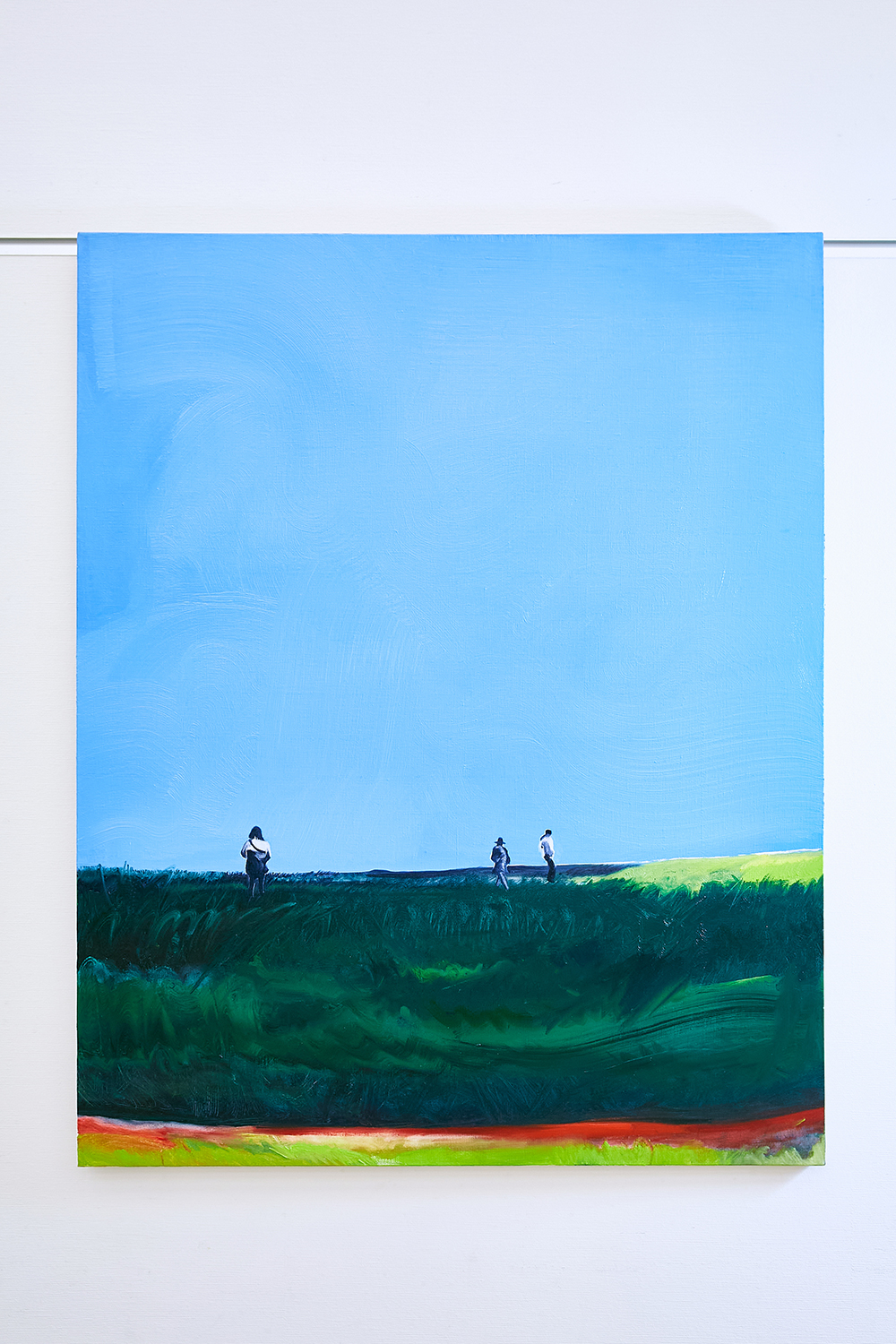
Grand Prix winning work “Untitled” 162×130.3cm oil on canvas 2021
─ Mr. Fukuhara had submitted another work of the same size, and it seems that he was chosen for the grand prize because he saw the potential in the breadth of his creation. I heard that both of them passed the initial screening because the judges thought they were works by different artists.
I thought it would be more interesting to submit two points with different systems, but I'm really glad I submitted these two points. The winning work took a few hours, and the other one took about a month. The other piece I drew was a group of plants based on a photo taken of the forest behind my grandmother's house, and I was able to utilize what I struggled with with this work in my winning work, so it was quick and fun. is not it. The work that won this award was completed so quickly that I drew several of them in quick succession. By the time I submitted it to the Idemitsu Art Award, I had enough pieces, so I submitted it to other public exhibitions as well. But that one fell off (laughs).
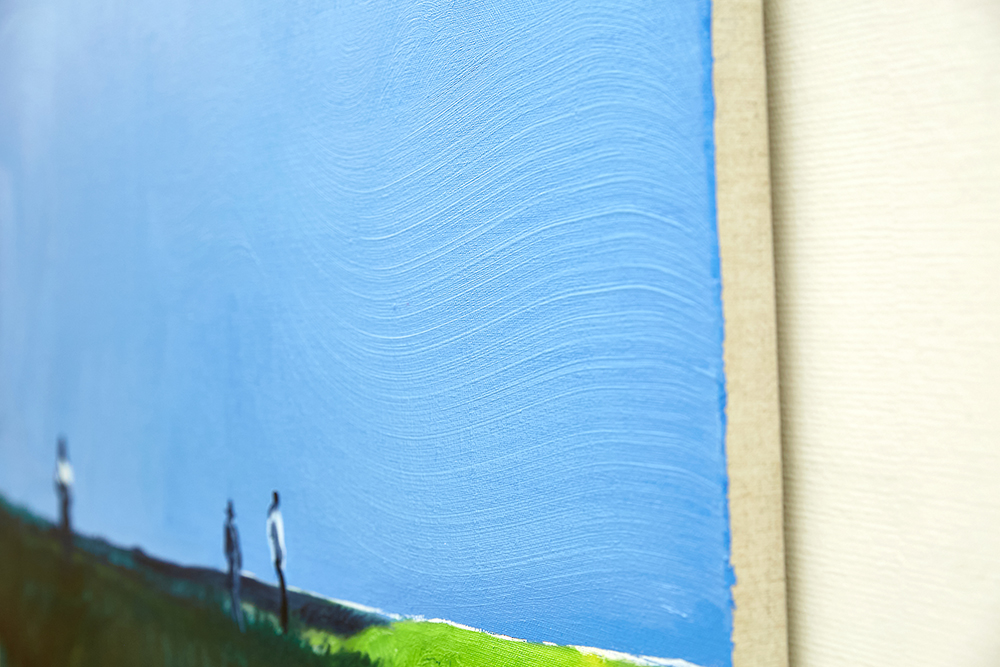
I applied in order to restart myself as I had stopped being able to draw.
─ When did you start oil painting?
I started drawing in my first year of high school at an art school prep school, and started oil painting in my third year. At first, I wanted to study design, but the first two-dimensional composition I tried was full of material and was nothing more than an oil painting, and the instructor told me that oil painting was better suited than design (lol). From then on, I spent a year painting oil paintings, which taught me how to understand what I want to do and what I can do, and face it. I continued to draw even after entering art school, but after graduating I couldn't draw anymore for about a year.
─ What was the reason for not being able to draw?
During my second year of university, I became so fascinated by the drawings of my classmates that I lost sight of myself. Still, I struggled through my four years at university, mainly focusing on painting, but after graduating, I even thought about running a gallery and bar in order to support my fellow artists.
─ Why did you apply for the Idemitsu Art Award?
Over the past year, due to the coronavirus pandemic, I wasn't able to work much part-time and was wasting my time, when a friend who I was renting an atelier with got really angry at me and told me to live with a purpose. He recommended that I apply to Shell. That's why my classmates were surprised when I won the award. Most of my classmates probably thought I didn't continue drawing. My family was understanding, and I don't think I could have achieved this result on my own.
─ So you restarted your business and are now continuing your activities as a painter.
yes. When I think about my future as a painter, I continue to create works with the idea that I need to create them at a certain speed. Among the best-selling artists in Japan, Yukimasa Ida seems to be able to draw quickly. I'm currently working on the third floor of my grandmother's house, and I'm working on about 10 paintings independently and simultaneously, and while I'm preparing the base and waiting for it to dry, I'm going to work on another painting. Sometimes I use leftover paint from drawing another picture. I think this flexibility will be my strength.
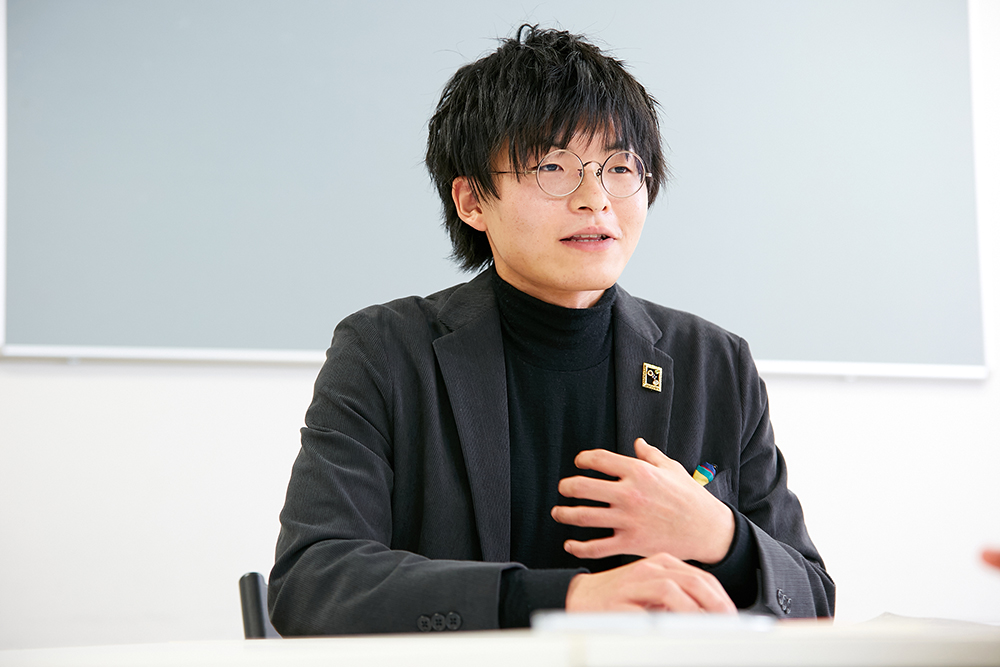
Yuta Fukuhara Born in 1997, lives in Tokyo. Graduated from Musashino Art University, Faculty of Art and Design, Department of Oil Painting, in 2020.
─ What kind of themes do you use in your productions? Looking at your portfolio, you can see that you paint a variety of paintings including still life, landscape, portrait, semi-figurative, and abstract.
For the winning work, I drew people out of my desire to draw people, but I honestly didn't think I was good enough to draw people in oil, so I tried to change the perspective, such as the cityscape seen from above. I'm drawing. Lately, I've been wanting to create works that allow the viewer to relive my own point of view, and that allow the viewer to stand from my own point of view.
Also, lately I've been drawing on my smartphone. (Showing the gallery on his smartphone) This is a night view I saw while driving on the Shuto Expressway, capturing the moment when the outline of a building and the outline of the sky become blurred, and also an image of how to paint the clouds reflected on the building on a canvas. I also drew while holding it. Since I don't draw people in oil paintings, I sometimes draw sleeping friends or people in front of me on the train. There's a training aspect to it, and I think I'm the type of person who gets bored easily, so I'm trying to keep my enthusiasm up.
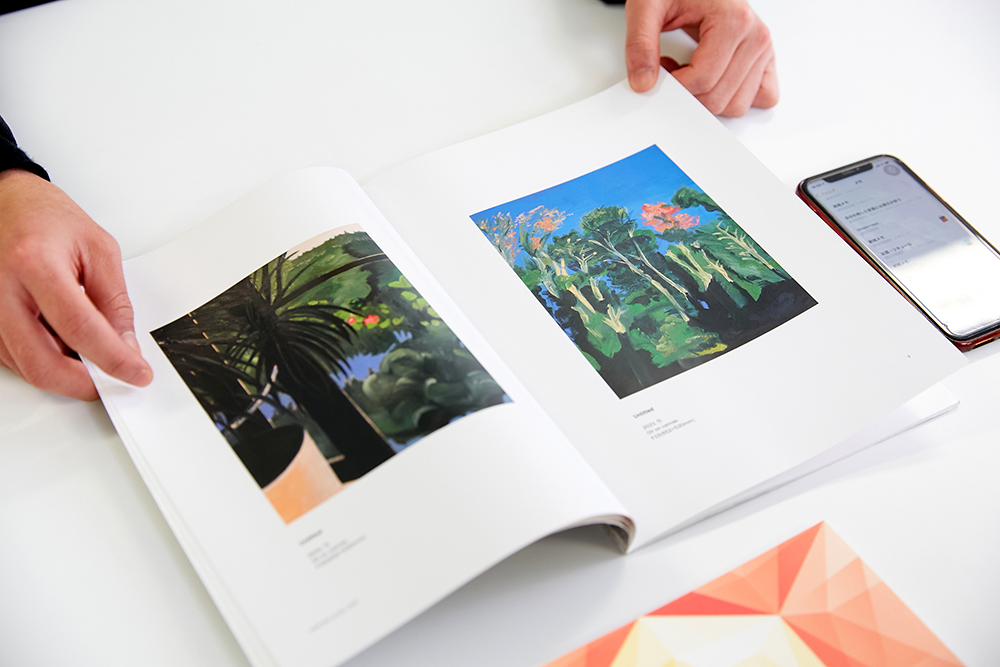
Fukuhara's portfolio. All but one of the 25 paintings in her portfolio were created between July and November 2021, and she posted them on Instagram after they were finished.
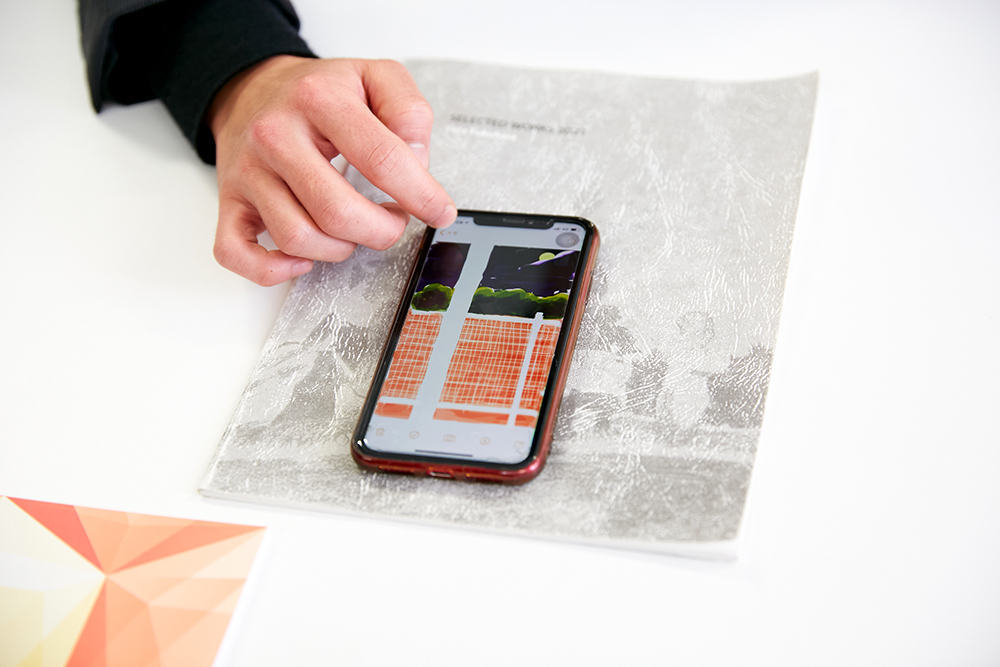
Drawing on a smartphone. He often draws, and sometimes turns his drawings into oil paintings.
I want to absorb the works of various artists by “looking at them”
─ On a different note, in the award-winning comment on the official website, you read, “Until now, I thought of myself as a collector rather than a writer.” Do you like looking at other people's pictures?
yes. There are many different eras and many favorite authors. I think it is especially important for people who want to become painters to get to know a variety of artists and be exposed to many paintings.
I went to “Van Gogh's Resonating Souls Helene and Vincent” twice and spent so much time looking at each photo that I would have forgotten to go up to the second floor if my friend hadn't warned me. Last year, I went to the Peter Doig Exhibition three times because I couldn't see enough even though I went in the morning and stayed all day. I stare at a picture for a long time trying to absorb it. My friends and I rented bicycles around Shibuya and visited about 20 galleries in two days, or we dedicate a day to one museum alone or two, and we try to do all our input all at once. The two-person exhibition by Michael Borremans and Mark Manders held at the 21st Century Museum of Contemporary Art, Kanazawa took an overnight bus and lasted an entire day. I left the venue at closing time, and the market in Kanazawa was also closed, so I couldn't eat anything (lol). Boremans was full (lol)
─ Do you ultimately want to incorporate what you have absorbed into your own paintings?
yes. I think I'm learning from that too. The award-winning work is also influenced by Miriam Kahn, who I have seen before, by putting red in front of the green grass, and by Wilhelm Sasnal, who uses the silhouette-like part. While I'm drawing, I instinctively choose what colors to use to make it interesting, but sometimes I realize later that the work was inspired by an artist's work I've seen before. I want to learn about the context and historical background of paintings, so recently I've been reading books such as David Hockney's “History of Paintings, From Cave Paintings to the iPad”, which is about the history of images.
─ Having come into contact with various works from various eras, what do you think about the meaning of painting in this era?
The works of our predecessors, such as Van Gogh and Monet, give us a sense of the atmosphere of that era, the landscapes that the artists were looking at, and even the smells. I think that's the beauty of painting. There are various methods of contemporary art, and I myself like to appreciate contemporary art, but I want to live as a painter and create paintings.
─ Please tell us about your plans for future activities.
Three solo exhibitions have been scheduled for spring, summer, and fall 2022. I've already accumulated nearly 50 works, so I'd like to continue presenting them.
─ Lastly, do you have a message for those who are thinking of applying for the Idemitsu Art Award in the future?
I believe that submitting your work to a public exhibition is a competition in that you will be compared with others, and you may be rejected or selected. Of course, since it's a picture, there's no direct winner or loser, and it also depends on the compatibility with the judges that year and the luck of the moment, so I can't say for certain... That's why I would like to tell you that the process is important when submitting works to public exhibitions, not just the Idemitsu Art Award.
I had heard in advance that many of my classmates would be exhibiting at this year's Idemitsu Art Award, so I approached the Idemitsu Art Award with the mindset that I didn't want to lose to anyone. As a result, my motivation increased and drawing itself became fun. I thought that rivals and friends are important people, and I'm glad that I decided to apply and that I worked hard and had fun during the process.
For those who are considering applying, I hope you enjoy the process of creating and exhibiting your work, and draw, draw, and draw! I'm really looking forward to seeing the masterpieces at the next Idemitsu Art Award.
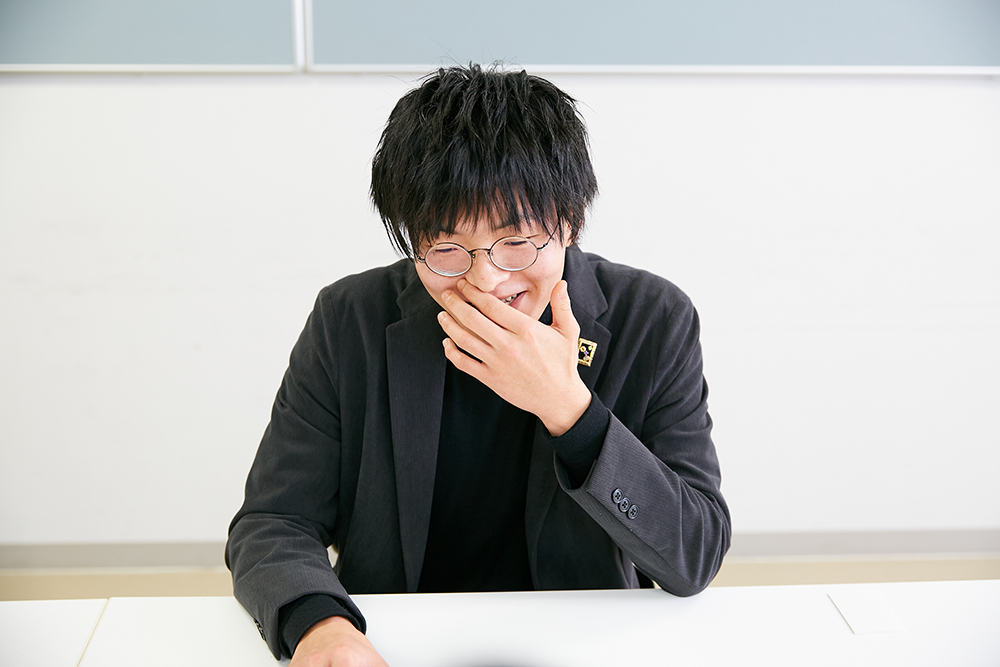
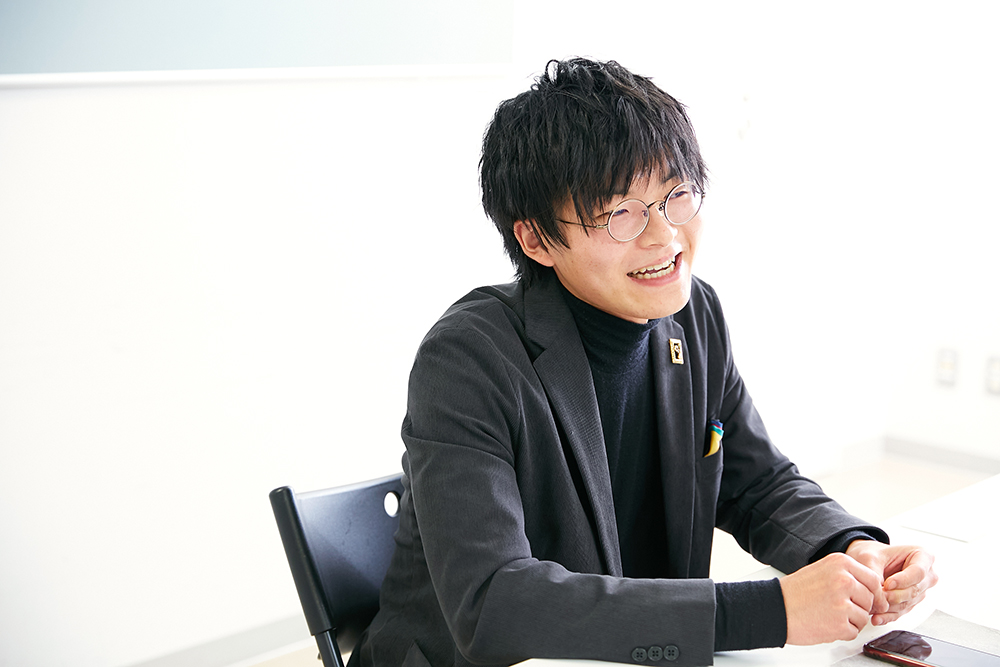
*The interview for this article was conducted on December 10, 2021.
First appearance: Contest information site “Toryumon” Text: Yuri Shirasaka Photography: Maki Kato Editor: Kaori Inose (JDN)